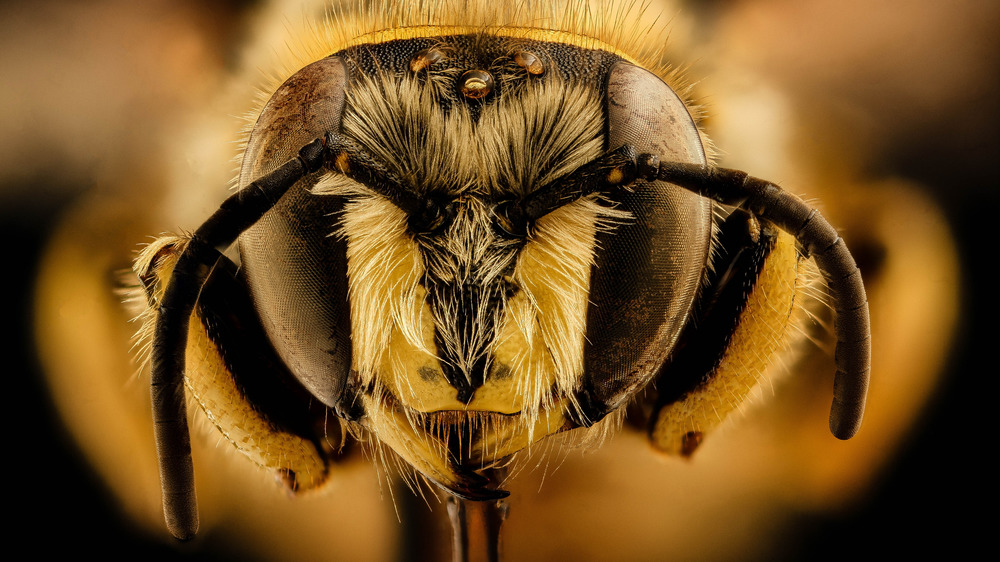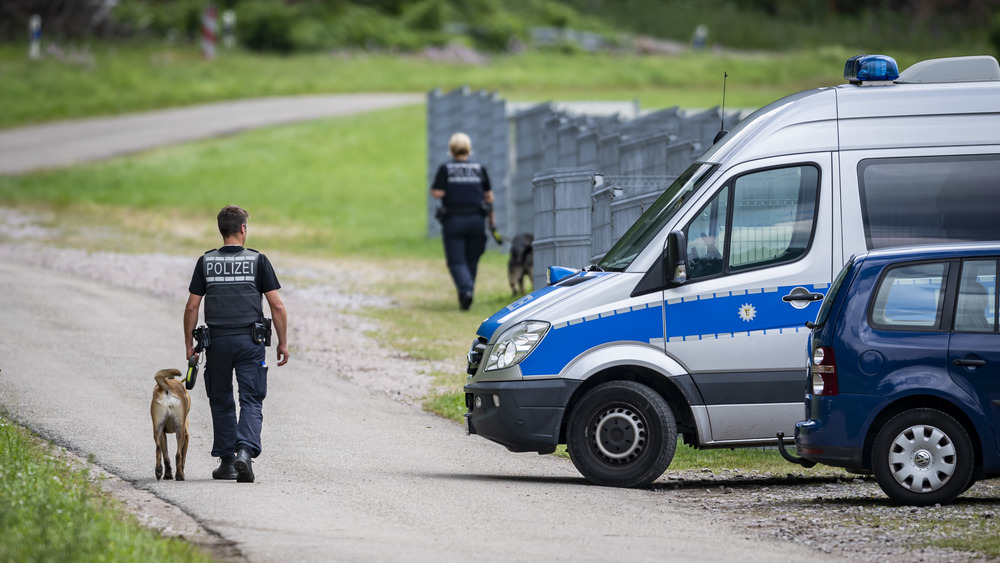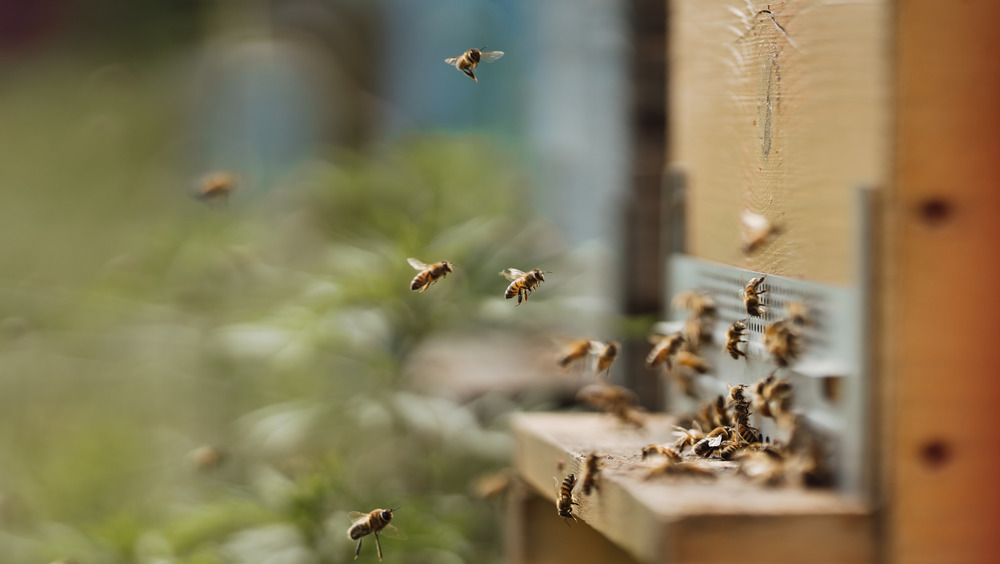How Bees Helped Uncover New York's Biggest Marijuana Farm
Most of the insect-related headlines of the past few months have been to do with the emergence of the frankly terrifying murder hornets that are currently plaguing the U.S. Bad news indeed, and hopefully a topic we'll eventually read less about, along with all the other nonsense we'd like to collectively put behind us in 2021.
In previous years, though, it has been bees, not hornets, getting the most column inches. Most of the stories, concerning dwindling bee populations that might threaten the existence of life on Earth as we know it, were terribly depressing. Yet, others put bees front and center in some of the oddest stories of the last decade.
In 2015, for example, it was bees that led New York police to uncover the city's largest-ever pot factory. The setup was hidden underground, beneath a factory producing maraschino cherries, according to First We Feast. It was uncovered following a strange phenomenon: the appearance in 2010 of a vast number of bright red bees that had begun to populate the New York area. The New York City Beekeepers Association (NYCBA) was reportedly nonplussed by the situation and was highly concerned when they realized the bees must have been consuming something that turned the insects' honey bright red, too.
The NYCBA approached the Department of Environmental Conservation to investigate, and they tracked the source of the bees' sudden redness to vats of red syrup that were being left in the open for a time at the factory. The NYPD, who had long suspected that weed was being grown on the property but had been unable to obtain a warrant, used the opportunity to conduct a full search of the premises and brought in one of the biggest marijuana hauls in New York history.
But this wasn't the only strange bee story to emerge during the 2010s.
German police are seriously considering training "sniffer bees"
The use of bees in the 2015 New York marijuana bust was a case of serendipity, but some police forces consider bees to be potential future colleagues – ranking among sniffer dogs – in the fight against organized drug crime.
In 2019, Sonja Kessler, a 22-year-old German police officer who moonlights as a beekeeper, hit the headlines around the world thanks to a prize-winning bachelor's thesis in which she argued that the insects known usually for dealing in pollen and honey might feasibly help in the detection of illegal narcotics. According to I Am Expat, Kessler's idea built on research conducted at the University of Cologne in 2015, which found that honeybees could be trained to differentiate between cocaine and heroin.
Asharq Al-Awsat reports that the method involves conditioning bees to associate the smell of a certain drug with the arrival of a sweet treat. As a result, whenever the conditioned bee is able to smell the drug once conditioned, the insect will dip its stinger – through which it absorbs nectar – expecting sugar, thus indicating the presence of the drug to its human colleagues.
By combining this neat bit of bee husbandry with a system in which conditioned bees might be monitored – such as by marking the insects with fluorescent powder and then tracing their movements via a police drone – Kessler demonstrated that a single colony of bees could search an area of 50 square kilometers (nearly 20 square miles) in minutes.
Bees are now a target for criminals
While German drug dealers may well be having nightmares at the thought of the next generation of police being accompanied by swarms of buzzing narks (insert "sting operation" joke here), bees south of the equator have recently found themselves victims of organized crime.
In March 2017, a Reuters report made the shocking claim that in Wellington, New Zealand, criminal gangs were responding to the craze for luxury Manuka honey by making off with whole beehives. According to the report, more than 400 bee and honey thefts were reported over a six-month period, leading one beekeeper to describe the crimewave as "the new gold rush."
Then in 2020, a similar glut of bee thefts began to occur in the U.S., where demand for bees for pollination meant that hives had become a much-sought-after commodity. One beekeeper told The Guardian that a load of 92 hives he was transporting from Oregon to California were stolen from a holding area outside Yuba City. Reportedly, such heists have become surprisingly common, while sadly such thefts attempted by gangs with the use of trucks and forklifts often cause the deaths of thousands of bees as hives are irreparably damaged.
A new generation of "bee theft detectives" are currently investigating such crimes, which often account for the loss of over 1,000 hives per year in California alone.


